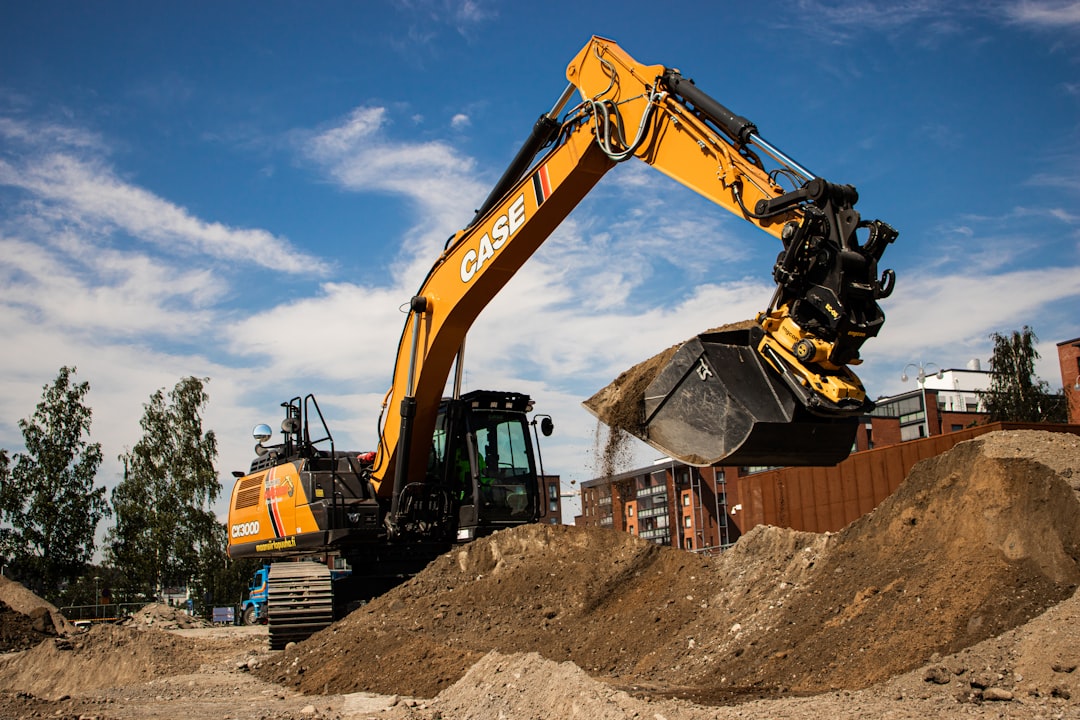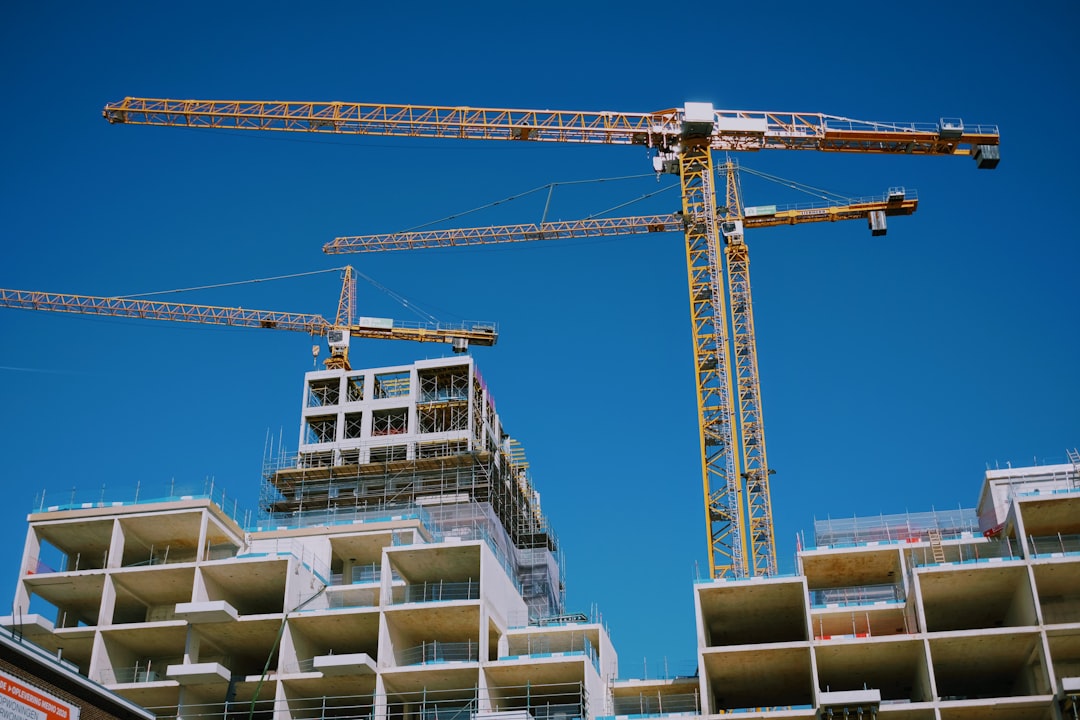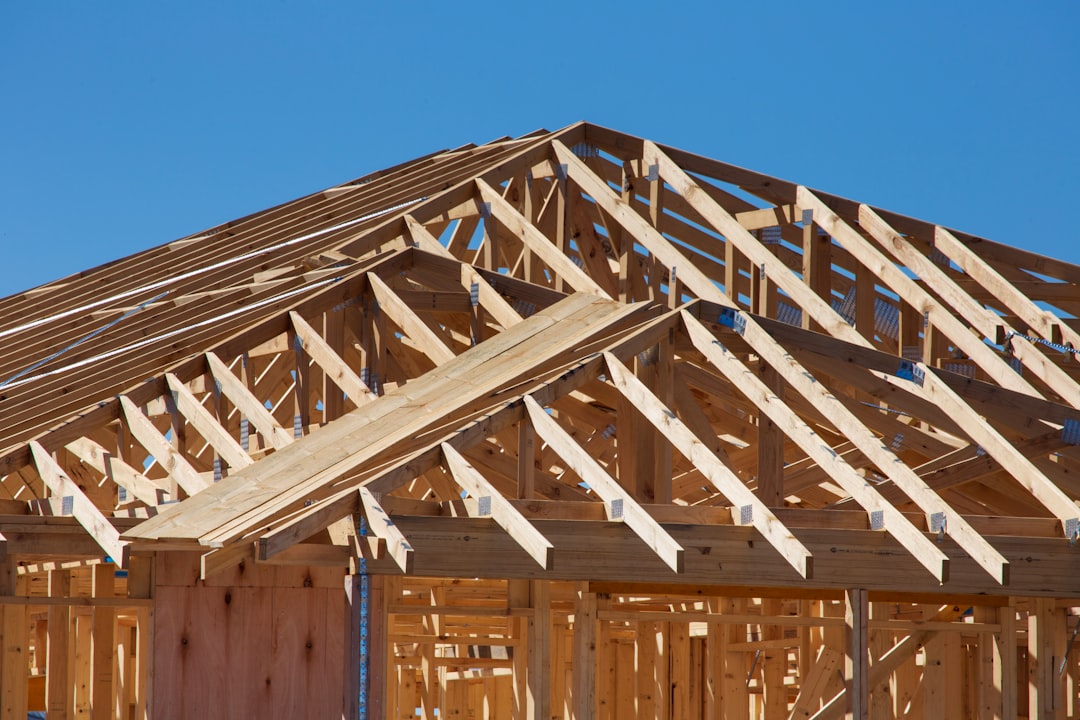

Engage prospects with a scan and streamline customer engagement with FREE QR code marketing tools by Sona – no strings attached!
Create a Free QR CodeFree consultation

No commitment

Engage prospects with a scan and streamline customer engagement with FREE QR code marketing tools by Sona – no strings attached!
Create a Free QR CodeFree consultation

No commitment
Keeping commercial properties maintained is a continuous challenge for property managers and facility teams. The hurdles of missing high-value prospects who never submit a form or handling incomplete service logs often lead to costly lost opportunities and gaps in operational visibility. With rising expectations for speed, transparency, and safety, traditional processes like manual logbooks, paper maintenance checklists, and static signage frequently result in slow response times, missed service requests, and limited engagement. The inability to quickly identify leads or track tenant needs as they emerge puts both operational efficiency and tenant satisfaction at risk.
Today, digital transformation is rewriting the playbook for building maintenance services, property upkeep, and real estate property maintenance. QR codes offer businesses a way to bridge the gap between physical assets and digital workflows, streamlining everything from service requests to building tours. For commercial property maintenance professionals, this brings a strategic advantage: tenants, vendors, and staff can now access essential services or content instantly, while property teams capture every new engagement, helping surface anonymous traffic that would otherwise remain invisible.
By incorporating QR codes at key touchpoints, commercial property teams can automate processes, capture leads sometimes even before they fill out a form, and track interactions with granular detail. Such real-time insight improves response, nurtures tenant relationships, and uncovers high-value prospects who might otherwise go untracked in the CRM. This guide explores modern strategies, formats, and deployment options to unlock the full value of QR codes in commercial property maintenance, turning every interaction into an opportunity for discovery and growth.

QR codes bridge the gap between physical assets and digital convenience, providing a tactical response to the frequent frustration of missed or delayed lead capture. Too often, prospects or tenants express interest without leaving a clear trail, whether that is a maintenance inquiry left on a neglected clipboard or a tour request that never makes its way to the leasing team. With a scan, you can move these moments into a digital flow that logs, routes, and responds immediately.
Begin by identifying analog touchpoints that consistently underperform: printed maintenance checklists, static lease flyers, paper visitor logbooks, and poster-style tenant notices. Replace these with QR-triggered experiences that open a mobile form, a status dashboard, or a request flow. Every scan becomes a traceable event, giving operations and leasing teams a way to see what needs attention, who is interested, and where demand is emerging.
By replacing analog processes with digital, scan-triggered automations, commercial property teams gain the ability to identify, nurture, and convert high-intent leads in real time. This closes the gaps that historically led to missed opportunities, slow responses, and incomplete reporting.

Visibility and agility are critical in property maintenance. Yet legacy processes often obscure who is interacting with your building assets and services. Tenants might glance at an elevator poster, vendors might check a posted cleaning schedule, and prospective tenants might walk past a leasing sign. Without a simple way to respond in the moment, interest fades and you lose a chance to create value.
QR codes reduce this friction by converting static moments into actionable interactions. Instead of hoping someone visits a website later or finds a phone number, you give them a one-scan route to the next step. This is particularly useful for maintenance requests, safety alerts, on-call resources, and leasing interest where timing is everything.
These benefits apply directly to common materials in commercial buildings. Think appointment cards for service windows, posted emergency guides, contractor entry instructions, restroom cleaning logs, lobby leasing displays, and parking garage signage. Each becomes measurable and responsive with a well-placed QR code and a targeted call to action.

Selecting the right QR code format helps property teams solve recurring operational pain points like incomplete checklists, anonymous visitor interest, and disconnected service logs. The goal is to meet users where they are with the simplest next step.
Static codes work for evergreen content like building rules, while dynamic codes make sense for anything that changes frequently or requires analytics, such as inspection flows or leasing promotions. Pair the format with a destination tailored to the user’s context, and you turn every placement into a useful, trackable interaction.
Dynamic QR codes are particularly valuable for content that changes or requires analytics. With a platform like Sona QR, you can update destinations, attach UTM parameters, and aggregate scan data in one dashboard, then sync to your CRM or maintenance systems for closed-loop reporting.

Growth in commercial property maintenance frequently depends on surfacing hidden engagement. Prospective tenants, vendors, and even current occupants often interact with your signage and processes without identifying themselves. Strategic QR placement turns these anonymous moments into measurable signals that support both operations and business development.
Focus on high-traffic locations and high-intent moments where a user’s motivation to act is strongest. Each placement should have a clear call to action that matches the user’s context, such as booking a tour, reporting an issue, or requesting after-hours access.
By targeting these placements, every scan becomes a touchpoint for service and a data source for growth. Over time, you build a continuous improvement loop where the most effective locations, messages, and formats guide your next round of deployment.

QR codes do more than speed up tasks. They solve the core challenge of capturing intent and activity across a complex building ecosystem where many interactions are fleeting and analog. When you map codes to your most common workflows, you improve visibility and make it easy for users to do the right thing quickly.
Below are high-impact use cases that align with typical tenant and visitor interactions, as well as internal maintenance workflows. Start with a few that match your critical gaps, then expand to create a comprehensive engagement layer across the property.
These use cases move beyond convenience. They systematically close information gaps, reveal buying signals, automate follow-up, and document every interaction for future analysis and optimization.
Every scan is a piece of intent. Deploying multiple QR codes across a property reveals who is interested, what they want, and when they are most engaged. This data fuels precise retargeting that reflects real behavior, not assumptions, and helps both operations and leasing teams respond with the right message at the right time.
For commercial property maintenance, the audience distinctions are clear. You will often segment by tenants versus vendor partners, prospective tenants versus brokers, and new visitors versus returning users. With a platform like Sona QR feeding data into your CRM and ad tools, you can personalize follow-up sequences, prioritize outreach, and increase conversion rates.
This approach turns ad hoc engagement into a structured program that continually refines itself. Over time, your QR scans power a high-fidelity map of tenant and prospect behavior that guides both operational improvements and revenue generation.
Traditional marketing struggles to connect offline exposure with online engagement. QR codes solve this by acting as connectors that turn print and physical experiences into measurable digital actions. For commercial property maintenance and leasing teams, this alignment removes blind spots and strengthens attribution across the funnel.
Integrate QR codes into the channels you already use, then add unique parameters and tracking so you can see which assets and messages drive results. With a centralized platform like Sona QR, you can manage all codes, monitor performance, and sync scan data with your CRM and analytics stack.
When QR codes are woven into your broader marketing, you create a connected experience that moves people from awareness to conversion while capturing the analytics that justify and optimize spend.
Designing and launching an effective QR program does not need to be complicated. A structured plan ensures your codes are scannable, placements are strategic, and data flows into the right systems for follow-up and measurement. Start with clear goals and a small set of high-impact use cases, then expand confidently as you learn.
The following steps outline a repeatable process tailored to commercial property maintenance. Use them as a blueprint for launching on a single building or standardizing across an entire portfolio.
Clarify the specific outcome you want to achieve. Examples include reducing maintenance response times, capturing more leasing leads from lobby traffic, or improving compliance documentation for inspections. Tie the goal to a measurable KPI such as average time to first response, number of qualified tour bookings, or percentage of inspections completed on schedule.
Document your starting baseline and the analog processes you plan to replace. If you currently rely on paper forms at the front desk or printed cleaning logs in restrooms, spell out how a QR-triggered flow will remove friction and provide better data. This helps align stakeholders and sets clear expectations for impact.
Select between static and dynamic codes based on the content and your need for analytics. Static codes are appropriate for evergreen content like building maps or permanent policy pages. Dynamic codes are ideal for campaigns, forms, or resources that change, and for anything you want to track or update without reprinting.
Consider the destination experience. A maintenance request should open a mobile-friendly form with location or asset pre-filled. A leasing inquiry should open a short form or chat that captures contact details and preferred times. Use Sona QR to manage destinations, add UTM parameters, and integrate scan data with your CRM and property systems.
Design your code to match your brand while prioritizing clarity and scannability. Include a short, benefit-driven call to action like “Scan to request service” or “Scan to book a tour.” Add a branded frame and keep sufficient contrast for easy scanning in varied lighting conditions. Post-print, test at typical viewing distances and angles.
Run usability tests with staff and a small group of tenants. Evaluate scan speed, landing page load time, and form completion rate. Fix friction points such as tiny form fields or vague CTAs. Make sure the landing page is optimized for mobile, since most scans occur on phones.
Map placements to user intent. For maintenance, place codes near equipment, in restrooms, and in high-traffic tenant areas. For leasing, prioritize exterior windows, lobby directories, and near elevator banks. For compliance, assign codes to inspection checkpoints and mechanical rooms.
Create a placement checklist for field teams that includes size, height from floor, contrast, and nearby lighting. Avoid areas with glare or obstructions. If a code is placed outdoors, use weatherproof materials and test in bright light. For high-use areas, print backups and set a cadence for inspection and replacement.
Instrument your QR program with analytics from day one. Track scan volume, unique scanners, time of day, and device type. Compare performance across placements and message variants. If a code is underperforming, adjust the CTA, size, or location and retest.
Connect scan events to downstream outcomes such as tickets created, tours booked, or revenue generated. Use Sona QR and Sona.com to unify scan data with web analytics and CRM records, then run A/B tests on landing pages or forms. For CRM setup, see Sona + HubSpot. A continuous improvement loop will raise scan rates, conversion, and overall ROI over time.
Many property teams struggle to connect on-site engagement to business results. QR analytics close this loop by tracking scans at the source and following the journey through service, leasing, and revenue outcomes. The goal is to align your operational metrics with marketing and sales results so you can invest with confidence. For methodology, see offline attribution.
A robust analytics approach requires more than a raw scan count. You need context such as where the scan happened, who scanned, and what happened next. With the right platform, you can also attribute outcomes to specific codes, campaigns, and placements to prove impact and inform optimization.
By moving from disconnected signals to a unified data model, you give leadership a clear line of sight from signage and field operations to revenue and satisfaction. This raises confidence in continued investment and supports smarter resource allocation.
Once you have proven early wins, expand your QR program to cover more touchpoints and automation. The aim is to deepen adoption among tenants and vendors while reducing manual work for your team. With consistent training and clear calls to action, scanning becomes the default behavior for routine tasks.
Prioritize automation and reporting so the program scales without adding administrative burden. As you standardize practices across properties, keep a playbook that spells out best placements, CTAs, and design specs for each use case.
With these practices, QR codes become a core part of your service culture, reducing friction for users and providing you with a steady stream of actionable data.
Choosing the right QR solution requires balancing security, integrations, usability, and scale. The stakes are high because missed engagement signals translate to lost opportunities, while unsecured systems create risk. A thoughtful evaluation prevents headaches later and ensures your investment supports long-term goals.
Compare platforms on features that matter most to property teams, including data privacy, analytics depth, and connectivity with building systems. A strong solution will improve daily operations and also prepare you for future digital upgrades.
The right platform will not only solve today’s pain points but also add agility to your operations. By unifying engagement and analytics in one ecosystem, you future-proof your properties as tenant expectations and building technologies continue to evolve.
Across interviews with facility directors, property managers, and leasing leaders, three themes consistently emerge. First, the highest ROI comes from placing QR codes in high-visibility locations with clear, specific CTAs that match the user’s intent. Second, integrating scan events with ticketing, CRM, and analytics systems accelerates response and centralizes documentation. Third, a willingness to experiment with creative deployments reveals new opportunities to capture demand and improve the occupant experience.
Consider these real-world examples that illustrate how QR programs drive measurable outcomes in commercial properties:
QR codes are redefining engagement and operational excellence in commercial property maintenance. They counter the perennial challenge of missing or delayed lead capture and turn previously invisible interactions into actionable signals. By transforming every surface, sign, and document into a data-rich touchpoint, property managers can illuminate blind spots, streamline maintenance workflows, and foster a seamless journey for tenants and prospects.
The measurable benefits include higher efficiency, lower costs, and a newfound ability to attribute revenue directly to offline and online campaigns. Adopting flexible QR solutions with analytics and integrations enables teams to adapt quickly as tenant needs and building technologies change. For commercial property maintenance leaders ready to tackle long-standing pain points with digital agility, the path is clear: modernize your touchpoints, surface high-value opportunities in real time, and turn every scan into a catalyst for operational improvement and business growth. Start creating QR codes for free.
QR codes have revolutionized commercial property maintenance by turning routine interactions into powerful lead capture opportunities. Whether it’s streamlining tenant requests, facilitating service scheduling, or providing instant access to property information, QR codes enhance customer acquisition and elevate the overall tenant experience, all while generating actionable data to optimize maintenance workflows.
Imagine instantly identifying which service requests generate the most engagement and adjusting your outreach without the hassle of reprinting materials. With Sona QR, you can create dynamic, trackable QR codes tailored for commercial property maintenance, update campaigns on the fly, and link every scan directly to measurable outcomes like faster response times and higher tenant retention. No more guesswork—just smarter, data-driven property management.
Start for free with Sona QR today and transform every scan into a valuable lead, a satisfied tenant, or a streamlined maintenance process.
You can improve efficiency by replacing analog touchpoints with QR code-triggered digital workflows that automate service requests, capture leads in real time, and provide detailed interaction tracking for faster response and better operational visibility.
Best practices include digitizing maintenance checklists and signage with QR codes, strategically placing codes where user intent is highest, leveraging dynamic content for updates, tracking scan data for insights, and integrating QR interactions with CRM and property management systems.
Choose services that integrate QR code technology with secure, role-based access, offer strong analytics, connect with building systems and CRMs, and demonstrate proven ROI in reducing manual work and increasing lead capture.
QR codes convert static materials and physical assets into interactive digital touchpoints that enable instant service requests, real-time lead capture, dynamic content updates, detailed tracking, and improved tenant and vendor engagement.
QR codes reduce the need for costly print replacements, minimize missed service requests and leads, lower manual processing hours, and enable more efficient resource allocation, resulting in overall cost savings and higher ROI.
Assign unique QR codes to equipment and locations to capture timestamped, attributed maintenance requests and inspection logs, creating detailed digital histories that support compliance and predictive maintenance.
Use QR codes on vacant suite windows, leasing signage, and digital tours to capture broker and tenant interest instantly, enable off-hours inquiries, and facilitate easy booking of tours or requests for more information.
Integrate QR codes into print collateral, direct mail, on-site signage, and digital media with unique tracking parameters to link offline exposure to online engagement, enabling precise retargeting and personalized follow-up through CRM and ad platforms.
QR codes streamline data capture, automate workflows, improve compliance tracking, enable real-time monitoring of service requests, and reduce manual paperwork, leading to faster response times and better documentation.
Use Sona QR's trackable codes to improve customer acquisition and engagement today.
Create Your FREE Trackable QR Code in SecondsJoin results-focused teams combining Sona Platform automation with advanced Google Ads strategies to scale lead generation

Connect your existing CRM

Free Account Enrichment

No setup fees
No commitment required

Free consultation

Get a custom Google Ads roadmap for your business






Launch campaigns that generate qualified leads in 30 days or less.
